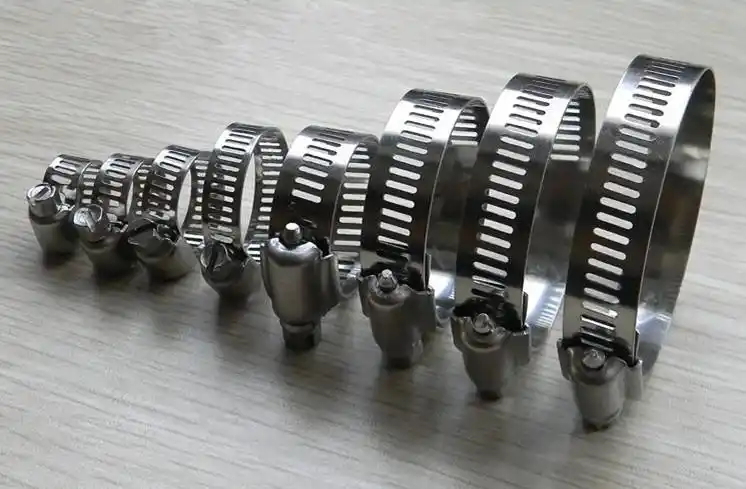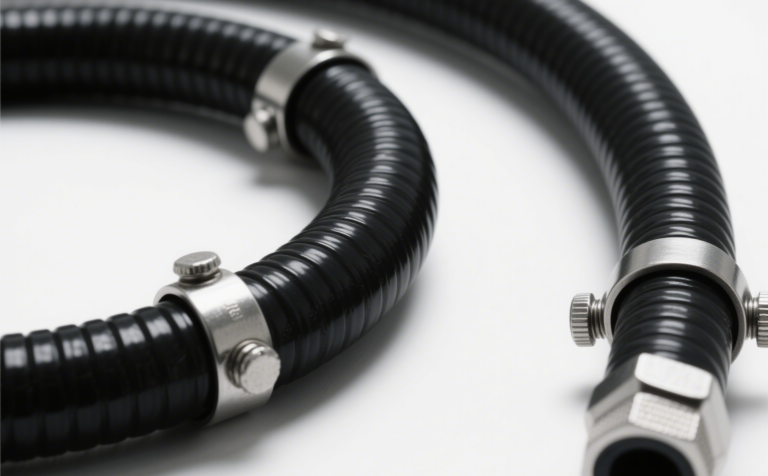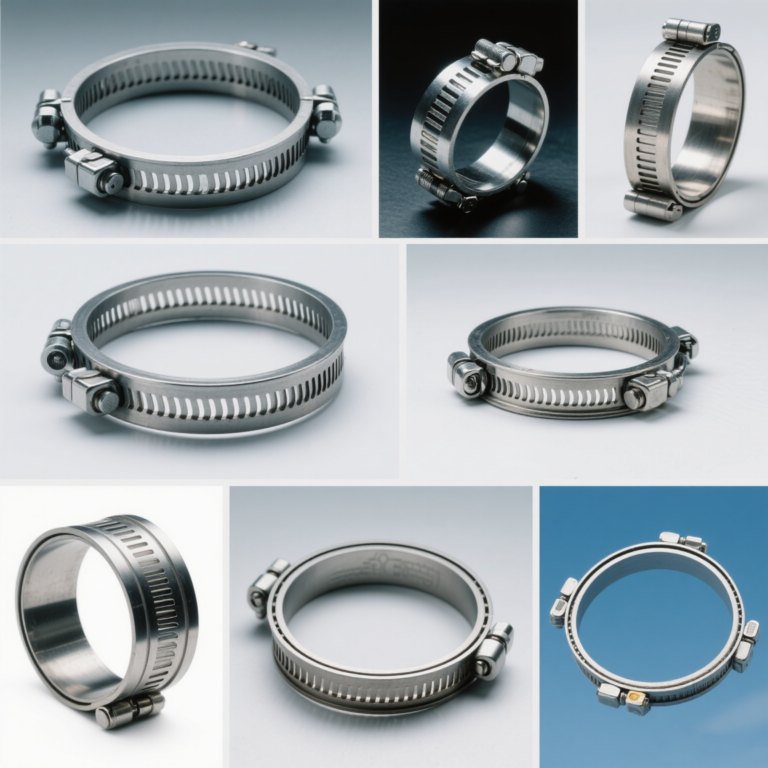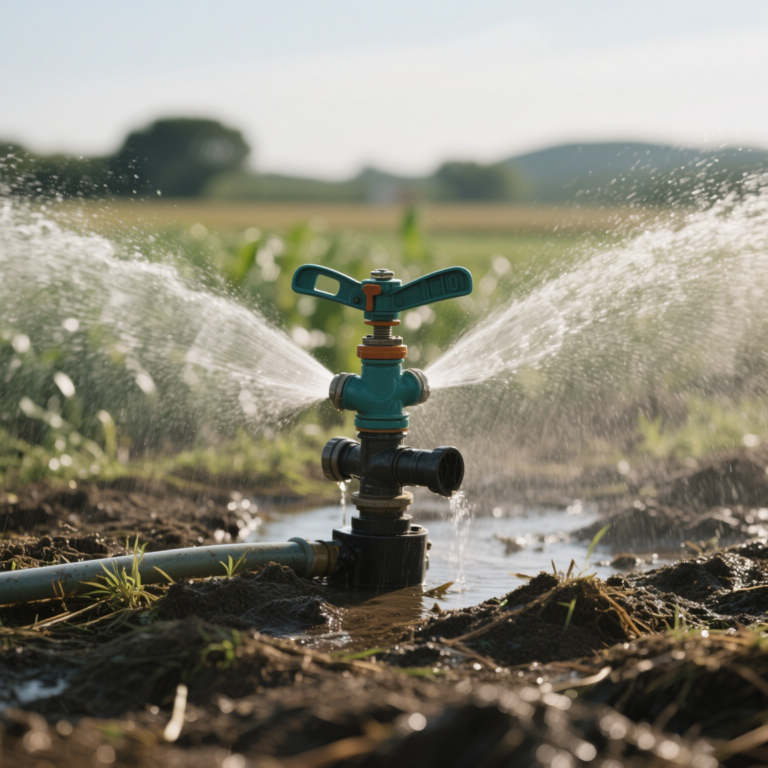Why are hose clamps made of stainless steel?
In the pipeline connection system, although the hose clamp is small, it bears the heavy responsibility of ensuring the…

1. Material properties: What makes stainless steel stand out?
A: The core advantage of stainless steel comes from its special alloy composition and microstructure. Take the common 304 stainless steel as an example. It contains 18% chromium and 8% nickel. This ratio allows a dense chromium oxide protective film to form on its surface. This film is like a natural armor that can effectively isolate air and moisture, prevent metal from rusting, and give stainless steel excellent corrosion resistance. At the same time, stainless steel has both high strength and good toughness. It is not easy to deform or break when subjected to external force extrusion or pulling, and can maintain stable performance in a wide temperature range of -200℃ to 800℃, far exceeding traditional materials such as plastics and carbon steel.
Q: How important is corrosion resistance to hose clamps?
A: Hose clamps are often exposed to humid, acidic, alkaline or salt spray environments. If the material is not corrosion-resistant, rust will not only reduce the clamping force, but may also contaminate the medium in the pipeline. For example, in food and beverage production lines, rusty carbon steel hose clamps may cause iron filings to mix into the product; in desalination equipment in coastal areas, ordinary metal clamps will be corroded by salt spray within a few months. Stainless steel hose clamps, however, can be used stably for more than 5 years in the above scenarios due to their corrosion resistance, avoiding the cost and safety hazards caused by frequent replacement.
2. Application scenarios: How does stainless steel solve practical problems?
Q: In which industries or scenarios, stainless steel hose clamps have significant advantages?
A: Stainless steel hose clamps are suitable for fields with extremely high reliability requirements:
Industrial manufacturing: In the chemical and petroleum industries, the media transported by pipelines are mostly strong acids, strong alkalis or corrosive liquids. Stainless steel hose clamps can resist chemical erosion and prevent leakage accidents;
Food and medicine: The non-toxic and easy-to-clean characteristics of stainless steel meet hygiene standards and avoid metal pollution risks. It is the first choice for food processing and pharmaceutical equipment;
Automobiles and ships: The high temperature and vibration environment of the engine compartment, as well as the seawater corrosion faced by ships, require the high strength and weather resistance of stainless steel hose clamps to ensure pipeline safety;
Home and construction: In the humid environment of the kitchen and bathroom, stainless steel hose clamps will not rust or break, ensuring that the water pipe connection is long-term and stable.
Q: Can you give an example to illustrate the actual value of stainless steel hose clamps?
A: A large brewery once suffered from rusting of carbon steel hose clamps, which caused iron filings to contaminate beer, resulting in annual losses of more than one million yuan. After replacing it with 304 stainless steel hose clamps, the corrosion problem was completely solved, the product defect rate dropped by 20%, and the maintenance cost was reduced by 40%. For example, if plastic hose clamps are used for household gas pipelines, they are prone to aging and falling off due to long-term high temperatures, posing a safety hazard. Stainless steel hose clamps, on the other hand, can ensure the safety of household gas use due to their high temperature resistance and strong clamping force.
3. Cost and lifespan: Is long-term use more cost-effective?
A: Although the initial purchase cost of stainless steel hose clamps is 20%-50% higher than that of plastic or carbon steel clamps, their ultra-long service life and low maintenance cost make them more cost-effective. Taking industrial scenarios as an example, carbon steel hose clamps need to be replaced 2-3 times a year on average, while stainless steel clamps can be used for 8-10 years without replacement. All in all, the full life cycle cost of stainless steel hose clamps is lower, especially suitable for long-term projects with high stability requirements.
Q: What is the recycling value of stainless steel hose clamps?
A: Stainless steel is a recyclable metal. After being discarded, it can be regenerated by smelting to reduce resource waste and environmental pollution. Compared with plastic hose clamps that are difficult to degrade, stainless steel materials are more in line with the trend of green environmental protection, and also reduce waste disposal costs for enterprises.
4. Performance comparison: Does stainless steel outperform traditional materials?
A: The main “shortcomings” of stainless steel hose clamps are that they are slightly heavier than plastic clamps, and over-tightening the bolts during installation may scratch the surface of the hose. However, these problems can be solved by matching rubber gaskets and using torque wrenches to control the force. Compared with its overwhelming advantages in corrosion resistance, strength, and life, these minor problems can be almost ignored.







